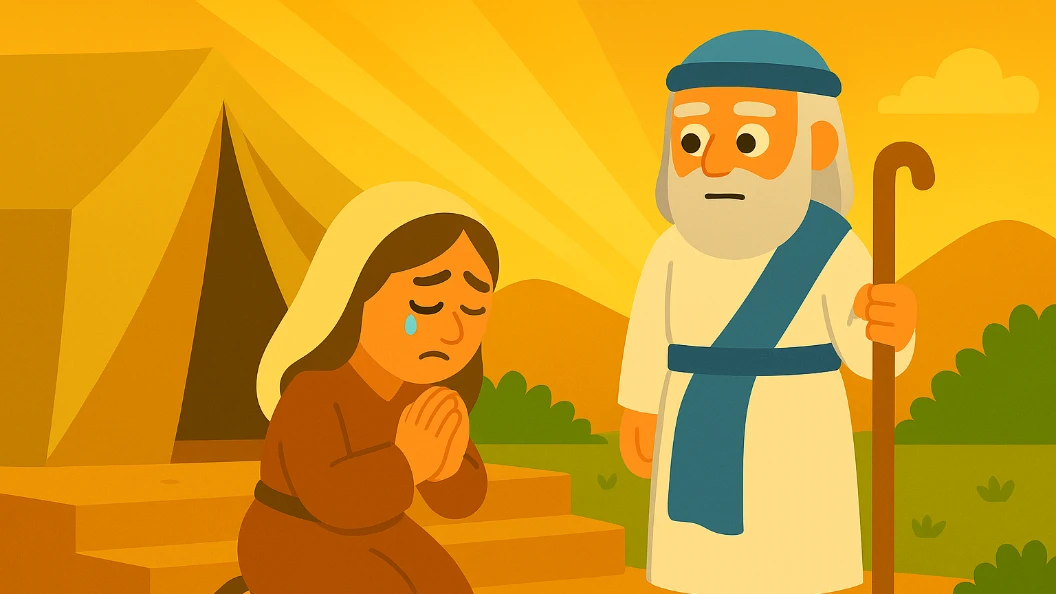Table of Contents
- 1. Introduction: Why Mary's Age Matters
- 2. Social and Familial Expectations for Girls in 1st-Century Judea
- 3. Scriptural References: What the Bible Says
- 4. Historical Research and Scholarly Estimates
- 5. Implications for Theology and Cultural Understanding
- 6. Impact on Art and Tradition
- 7. What Happened to Mary After Jesus Died?
- 8. What Did Mary Look Like?
- 9. Living Mary's Example Today
- 10. Conclusion / FAQ
The question of how old was Mary when she had Jesus is one that Christians and curious readers alike often ask. The Bible itself does not provide a specific age, leaving us to rely on historical context, Jewish customs of the first century, and early Christian tradition to form an educated estimate.
Most scholars suggest Mary was likely in her early teens—around 12 to 14 years old—at the time she gave birth to Jesus. This may sound startling to modern ears, but in 1st-century Judea, this was the cultural norm. Betrothal and marriage commonly followed soon after puberty, and young women were expected to begin families in their teen years.
In this artic le, we'll explore the historical, biblical, and cultural background of Mary's age, consider the theological implications of her youth, and look at how tradition and art have shaped our understanding. Along the way, we'll also discuss how modern believers can reflect on Mary's faith through digital tools like Manna, an app designed to help Christians stay rooted in Scripture and prayer.
1. Introduction: Why Mary's Age Matters
When people ask, "How old was Mary when she had Jesus?" they are often struck by the combination of her extraordinary role and her likely very young age. The age of Mary is not just a historical curiosity; it sheds light on:
- The culture of ancient Judea and the expectations placed on young women.
- The radical faith of Mary, who responded to the angel Gabriel with obedience despite the challenges.
- The theological message of God choosing someone humble and ordinary—an adolescent girl from Nazareth—to bear the Son of God.
The Bible does not state Mary's age directly, but by piecing together history and tradition, we can reach a well-reasoned understanding.
3. Scriptural References: What the Bible Says
The Gospels of Matthew and Luke give us the most information about Mary, though neither mentions her age explicitly.
- Matthew 1:18 describes Mary as "betrothed to Joseph" when she was found to be with child through the Holy Spirit.
- Luke 1:27–38 recounts the Annunciation, where Gabriel greets her as a virgin betrothed to Joseph and announces that she will conceive the Son of God.
While the exact age is left unspoken, both passages emphasize Mary's status as a young, betrothed virgin, which aligns with Jewish marital customs of the time.
Her youth only magnifies the significance of her response: "Let it be done to me according to your word."
4. Historical Research and Scholarly Estimates
Historians and biblical scholars generally place Mary's age in her early teens at the time of Jesus's birth.
- Common scholarly consensus: Between 12 and 14 years old.
- Extended estimates: Some scholars suggest up to 15–16 years old, especially considering Joseph may have been older.
- Apocryphal traditions: The Protoevangelium of James, a non-biblical text written in the 2nd century, suggests Mary was betrothed at 12 and gave birth around 14–16. However, this text is not considered historically authoritative.
While estimates vary slightly, the general agreement is clear: Mary was a teenager—likely no older than 16—when she bore Jesus.
5. Implications for Theology and Cultural Understanding
Why does it matter how old Mary was when she had Jesus?
Faith and Humility
Mary's youth underscores the radical faith she displayed. To accept the angel's message at such an age reveals extraordinary trust in God.
Contrast with Modern Norms
In today's culture, teenage motherhood often carries stigma or concern. In 1st-century Judea, however, it was expected. Recognizing this helps us avoid projecting modern assumptions onto ancient realities.
Symbolism of God's Choice
Mary's young age emphasizes the theme of divine reversal: God chose not the powerful or the wealthy but a humble, young girl from Nazareth to carry His Son.
These theological dimensions highlight that Mary's age is not simply a fact to be pinned down but a lens for deeper spiritual reflection.
6. Impact on Art and Tradition
Throughout history, Christian art and tradition have often portrayed Mary as young and pure, reinforcing the cultural assumption that she was a teenager.
- Renaissance and Medieval art frequently depicts Mary as a serene, youthful figure, sometimes almost childlike.
- Catholic tradition emphasizes her perpetual virginity, which also aligns with the idea of her being very young at Jesus's birth.
This consistent artistic portrayal reflects the long-held belief that Mary was a teenager when she became the Mother of God.
7. What Happened to Mary After Jesus Died?
To broaden the picture, it's worth considering Mary's later life.
- According to John 19:26–27, Jesus entrusted Mary to the care of the disciple John at the crucifixion.
- Tradition holds that Mary lived with John, possibly in Ephesus, until her death.
- The Catholic Church teaches the doctrine of the Assumption—that Mary was taken body and soul into heaven at the end of her earthly life.
Her youth at the beginning of Jesus's life contrasts with the maturity and endurance she showed as she witnessed His passion and death.
8. What Did Mary Look Like?
Another common curiosity is what Mary may have looked like.
- As a Jewish woman from the region of Galilee, she likely had dark hair, olive skin, and Middle Eastern features.
- Artistic depictions vary greatly, reflecting the cultures of the artists more than historical accuracy.
- What remains constant is the symbolic representation of Mary as youthful, humble, and radiant with grace.
This reinforces the image of Mary as a young mother chosen for an extraordinary mission.
9. Living Mary's Example Today
So, how does this historical question impact us now?
Mary's story invites us to:
- Embrace humility in our own lives.
- Trust God's plan, even when it feels overwhelming.
- Say yes to God with courage, no matter our age or circumstance.
For modern believers, reflecting on Mary's faith can be enriched with tools like the Manna app. With Manna, you can:
- Read Scripture daily, including passages about Mary.
- Explore guided reflections on themes like humility and trust.
- Join prayer challenges inspired by Mary's "yes."
- Stay consistent with reminders to pray and meditate, even on busy days.
In this way, technology can help us live out the lessons of Mary's faith in our own daily walk with God.
10. Conclusion / FAQ
So, how old was Mary when she had Jesus? The short answer is: we don't know for certain. The Bible does not say. But based on Jewish customs, historical research, and tradition, the most credible estimates place her between 12 and 14 years old, with some extending up to 15 or 16.
What matters more than the exact number is the message her age conveys: that God chose someone humble, ordinary, and very young to fulfill an extraordinary role. Her youth highlights her faith, courage, and obedience—qualities that continue to inspire Christians today.
FAQ
Was Mary really only 12 years old when she had Jesus?
It's possible. Scholars generally place her between 12 and 14, but exact certainty is impossible.
Why didn't the Bible mention Mary's age?
Ancient writings often focused on events, not personal details. What mattered most to the Gospel writers was her faith and role, not her age.
Does Mary's young age change how we understand Jesus' birth?
Yes. It reminds us of God's surprising choices and the humility required to accept His will.
Final Reflection
Mary's story is not just about history—it's about faith lived out in extraordinary circumstances. Asking "how old was Mary when she had Jesus" may lead us to numbers, but ultimately it points us to something greater: the courage of a young girl whose trust in God changed the world forever.




2. Social and Familial Expectations for Girls in 1st-Century Judea
To grasp Mary's likely age, we need to understand what life was like for Jewish girls in her time.
This cultural backdrop makes it very likely that Mary was a young teenager when she was visited by the angel Gabriel (Luke 1:26–27) and later gave birth to Jesus.
From a modern perspective, imagining Mary as a 13- or 14-year-old mother feels shocking. But in her world, this was not unusual—it was the expected path for young women in her community.